The most breathtaking waterfall in the Canadian Rockies, and one of the most gorgeous in all of British Columbia, Canada, is Takakkaw Falls. Here, we’ll explain why you should go, how to hike there, get to the waterfall, where to camp, and everything else you need to know to have a great day out there.
1. Is Takakkaw Falls worth visiting?
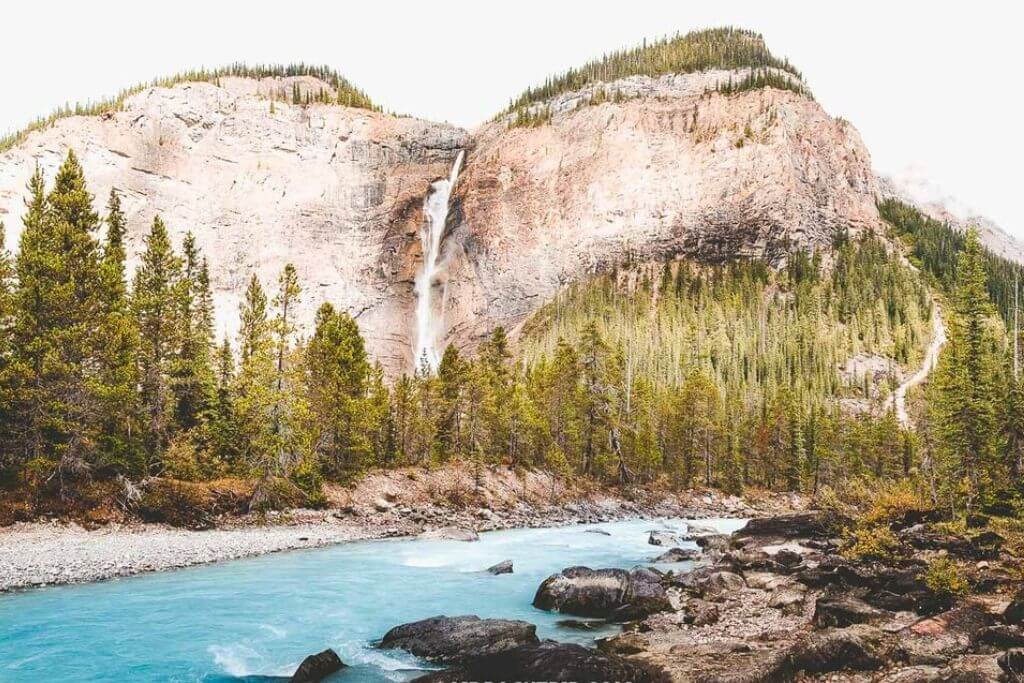
The falls are worth a visit! For various reasons, you should visit Takakkaw Falls (or “Tak” falls as locals refer to it). For starters, at 373 meters, it is also Canada’s second-highest waterfall. There are two drops, the largest of which is 254 meters high.
Almost any traveler to the Rockies should be able to view Takakkaw Falls because it is also very accessible. Parking is available, and a well-kept walk will take you close to the falls.
On the ancestral lands of the Ktunaxa, Blackfoot, and Cree First Nations is where Yoho National Park is located. The Cree word “yoho” means “awe and wonder,” This breathtaking park certainly lives up to its name. In the Cree language, “Takakkaw” means “lovely,” and there is a solid reason for it!
2. Where is it?
Within the Rocky Mountains, in Yoho National Park, is Takakkaw Falls, Canada. The 507 square mile Yoho National Park is also located in southeast British Columbia and borders Alberta.
3. History of the falls
The Rocky Mountains, which house Takakkaw Falls, were created when plates slipped under the North American plate between 80 and 55 million years ago, creating significant peaks and valleys. The 15-square-mile Waputik Icefield’s Daly Glacier, a component of the falls, is the source of the meltwater. The area was probably initially settled at the end of the last ice age, and the First Nations people gave the Falls their names and used them for thousands of years.
Although numerous expeditions visited the region, no one is certain when Europeans first found Takakkaw Falls. When James Hector was kicked in the chest by a loose horse in 1858 and nearly buried alive before his crew learned he had only been knocked out, the Kicking Horse River was given its name. Tom Wilson, who accidentally came across the nearby Emerald Lake in 1882 after his horses bolted, gave it the name. At that time, Europeans likely started visiting the region.
4. Amazing things you can do near Takakkaw Falls
Hike to Takakkaw Falls
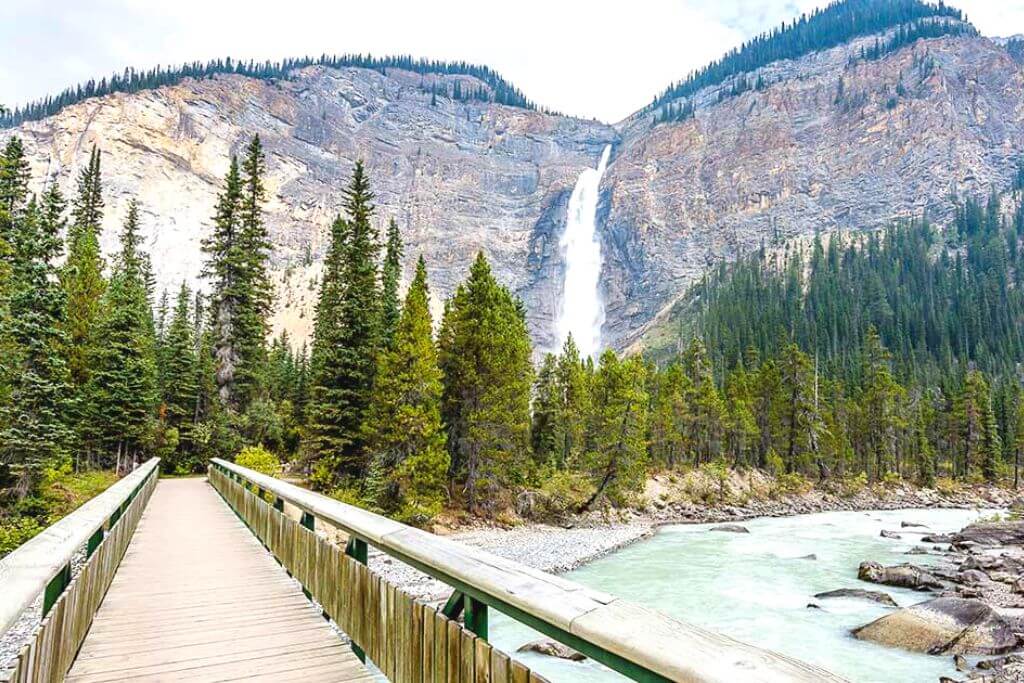
Although Takakkaw Falls may be seen from the parking lot, the trek offers the best views. Don’t worry; the climb is short and simple and will take you to the impressive waterfall.
Takakkaw Falls is not difficult compared to other walks in the Canadian Rockies. Only 36 meters of elevation are gained during the short, roundtrip 1.4 km climb to the falls on a well-maintained route. Depending on the time of year you come, you might start to get wet as you cross the bridge and truly experience the force of the falls.
- Do you know 13 Fantastic Things To Do In Banff In Winter
Takakkaw Falls camping
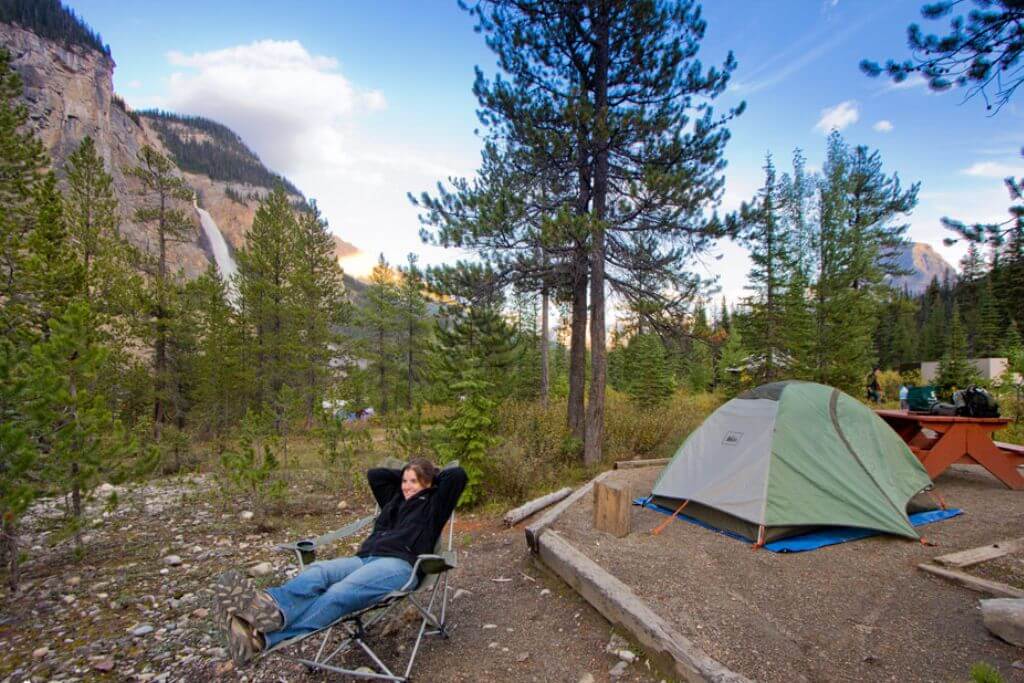
Choose the walk-in campground at Takakkaw Falls if you’re tent camping; it runs on a first-come, first-served basis. The campsite is only a short distance away, but they have a lot of carts that can transport your camping supplies. It’s a crowded campground, so even if it’s first come, first served, plan on not getting a campsite during the busy summer months, especially on weekends.
If you’re looking for a wilderness campground without much effort to get to, the backcountry campsite at Laughing Falls is close to the Takakkaw Falls campsite and can be a decent choice.
To get to the campsite, though, you’ll need to trek 125 meters higher with your gear over a 4 km distance. For backcountry camping, not too far away!
Check out Emerald Lake
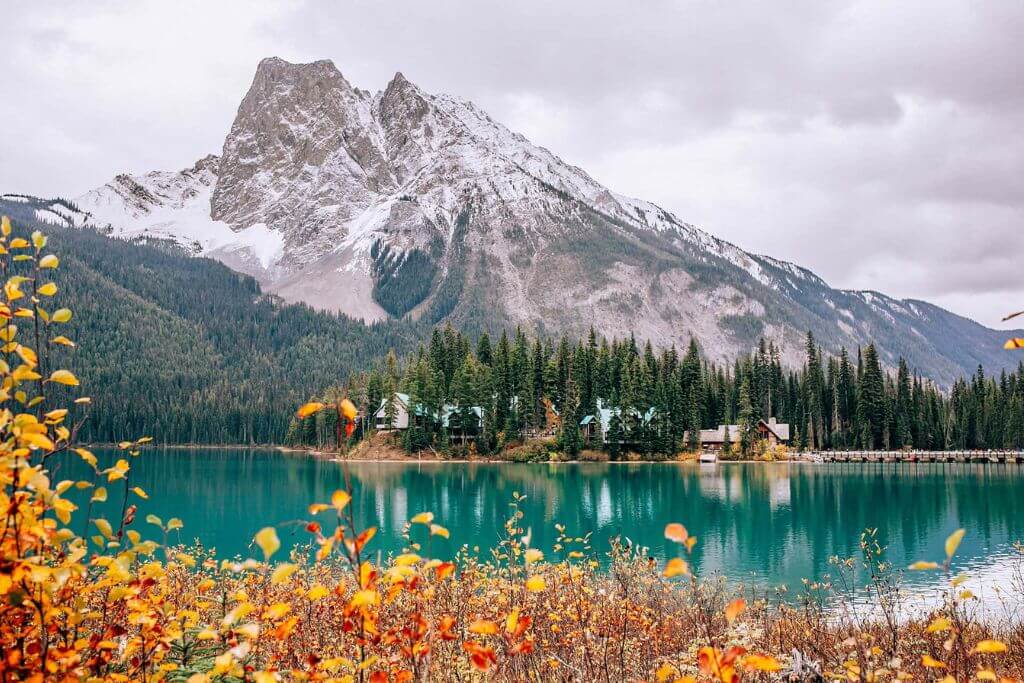
Emerald Lake is the largest of Yoho’s 61 lakes and ponds and, together with Takakkaw Falls, is one of the park’s main attractions. The silt particles suspended in the lake give it its stunning and distinctive color. The Emerald Lake Lodge, located on the lake’s edge, offers overnight accommodations. Additionally, a meeting center is close by. Take a 3.2-mile stroll around the lake or rent a boat if you’re here in the summer. Wheelchairs can also access the first half of the walking trail. Try cross-country skiing in the winter.
Don’t miss Wapta Falls
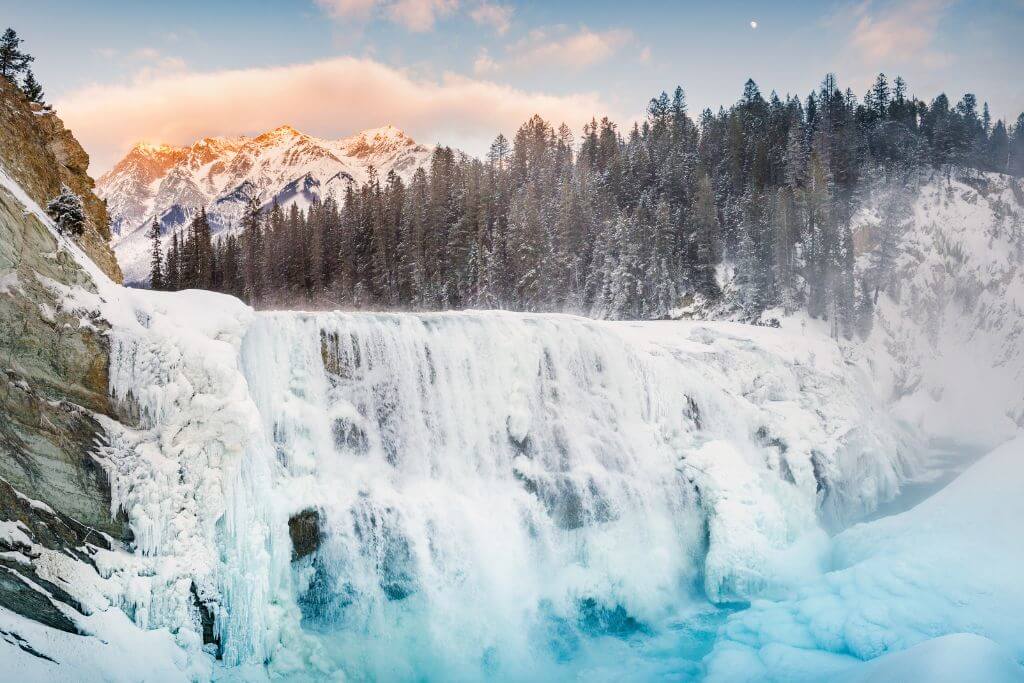
Despite being smaller than Takakkaw Falls, Wapta Falls is nonetheless magnificent at 98 feet high. It is also called for the icefield that supplies water to Takakkaw and Wapta Falls. The trip is short and simple, and in the winter, snowshoeing is an option for beautiful views of the falls.
See fossil increases
On your trip to Takakkaw Falls, keep an eye out for Burgess Shale fossils because Yoho National Park is famous for them. When these fossils were first found, railway employees for Canadian Pacific Railway gave the slabs the nickname “stone bugs.” These half-billion-year-old shale slabs are home to fossils from the earliest known species. Visit Walcott Quarry with a trained guide from Parks Canada to see the greatest deposits. You can see glimpses of Emerald Lake far below when the walk begins at Takakkaw Falls.
Observe Canadian train
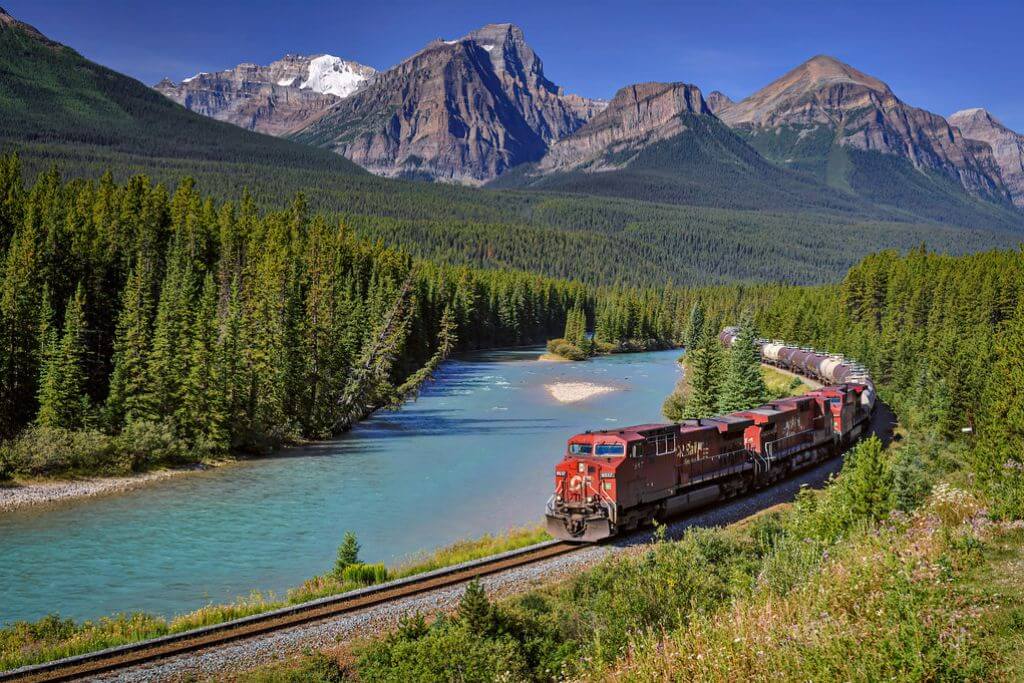
A feat of engineering called the Spiral Tunnel system enables trains to travel over the Rocky Mountains. Kicking Horse was an economically advantageous position for trains to pass through because of its closeness to the US border, but the steep incline necessitated a unique solution. On their way down, trains were losing control and derailing, and they lacked the power to climb the hill.
The trains would spiral while ascending the hill in steps in the Swiss system that served as the inspiration for the Spiral Tunnels. They are still in use today after being finished in 1909. You can observe 25 and 30 trains passing through the Spiral Tunnels each day from views situated within Yoho.
Climb in Yoho National Park
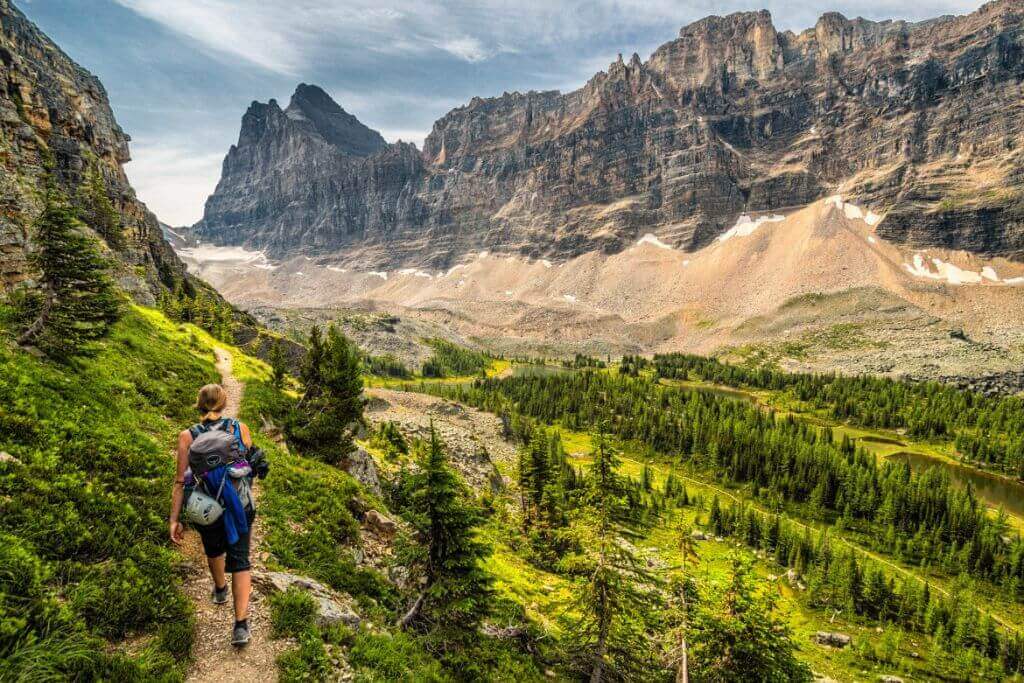
There are numerous climbing routes in Yoho National Park, many of which are Classic Climbing Routes. One of the routes leads you up a climb rated a 5.7 right next to Takakkaw Falls. In the neighboring Lake Louise, you can rent mountain sports equipment.
5. The best time to visit Takakkaw Falls
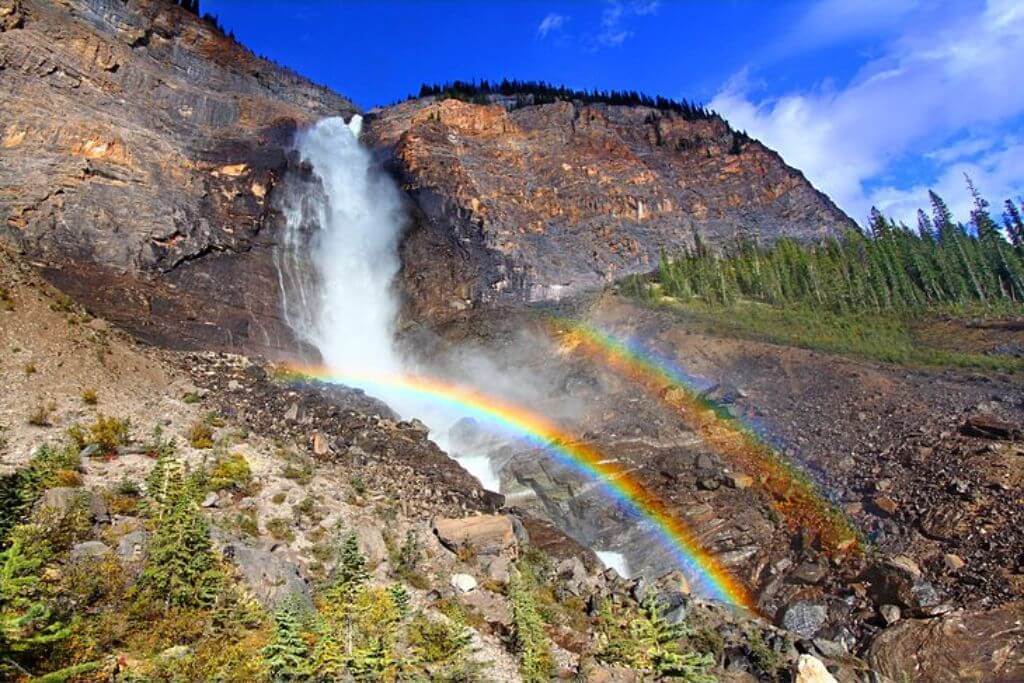
All ability levels can enjoy the Takakkaw Falls paths. If you’re walking or hiking, it’s preferable to visit them between April and September. The park is accessible all year. The trail’s access road, however, is seasonally closed. From May through the beginning of October, visitor services are offered.
The greatest weather is accessible in July and August when daily highs often hover around 20°C, and there is a good chance of precipitation. Expect a winter visit where the temperature will often be -5°C.
6. Getting to Takakkaw Falls
By taking the Trans-Canada Highway from Banff or Lake Louise and entering Yoho National Park, you can travel to the falls. After 15 miles, turn right onto Yoho Valley Road.
After entering Yoho National Park, it will take you 30 to 40 minutes of cautious driving to get to the parking area. Be cautious that there are several places where only one automobile can pass, including tight hairpin curves. You cannot drive a trailer or RV through these turns. Even though there is plenty of parking, this location is very popular during the summer, so plan to arrive early to prevent disappointment.
The Yoho National Park visitor center is located in Field, British Columbia, and is easily accessible from the Trans-Canada Highway.
7. Can I bring my dog to Takakkaw Falls?
At Takakkaw Falls, dogs are welcome, but they must always be on a leash.
8. Can you visit Takakkaw Falls in the winter?
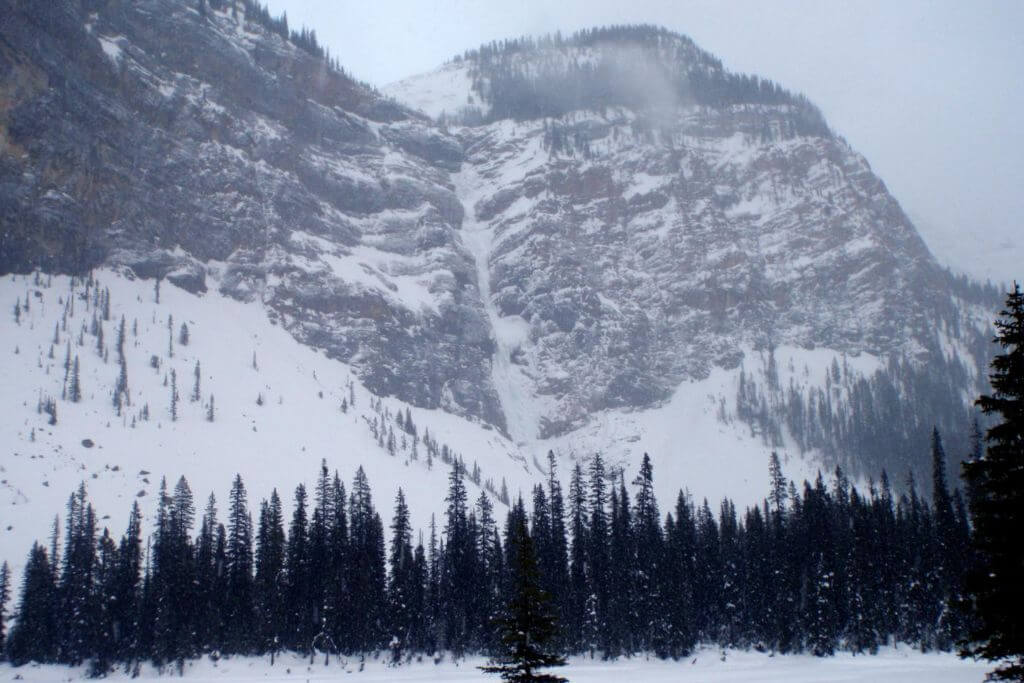
You can reach Takakkaw Falls through Yoho Valley Road. It is closed during the winter. The only method to get to Takakkaw Falls in the winter is by cross-country skiing. To visit Tak Falls in the winter, you’ll need to undergo proper avalanche training in this avalanche-prone area.
